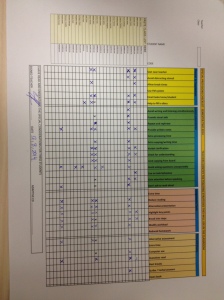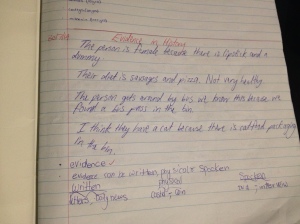I am now more confident in this area knowing that it is our responsibility as teachers to make sure all students have access to their learning. If there is a large stair case then students need to be provided with a lift or ramp for wheelchair access. Also we need to use different teaching strategies to support different learners.
I have read the document below and on page 19 it addresses working with children and young people with additional needs or disabilities, however I will definitely do more research to allow me to be able to demonstrate broad knowledge and understanding of legislative requirements and teaching strategies that support participation and learning of students with disability.
Protective Practices for Staff
I know that it is important to focus on what the student can do and work with their strengths.
I have also read the Disability Standards for Education and I have looked up various websites to increase my knowledge in this area.
Disability Standards for Education 2005
I aim to do wider reading, speak with Special Education advisors, speak with colleagues, join any relevant societies; discuss NEP’s and IEP’s with Adaptive Education staff and sit in on relevant meetings including meetings that may lead to a diagnosis.
Since January 2014 I have had multiple discussions with Adaptive Education staff, I have spoken with other staff and discussed modification and how to help all students to learn.
I have also actively participated in recognising the modifications that I make in my classroom. See the image and document below:
I consciously design and implement teaching activities that support the participation and learning of students with disability and address relevant policy and legislative requirements. See Standard 1.5 for Differentiation Strategies.
- I allow students to type if they find it difficult to write due to injury or disability
- I often scribe for students
- I simplify and modify tasks
- I offer to students the option to describe concepts verbally
I have also more recently read the Cornerstone-Adaptive Education Teacher Guide which was designed to support and help teachers in the classroom. It outlines symptoms of disabilities so that, as classroom practitioners, we can identify the characteristics. It also outlines a variety of different strategies which are suggested for students.
For students with anxiety I learnt to give advanced notice for changes, use positive self-talk, relaxation techniques and use of visual imagery. For students on the Autism Spectrum I learnt that they have difficulty with social interaction and have restricted or repetitive behaviours and interests. And for Asperger’s Syndrome in particular, they generally have difficulty in communicating and with behaviour. They find maintaining friendships challenging and social interaction.
In 2015 when I have a student with Asperger’s I plan to choose his seating carefully to allow him to easily get to my desk and the ‘time out’ space if needed. I have written some more notes about class work and specific strategies I will try. See below:
I have also read two picture books and two novels on Asperger’s to help prepare me for the coming year.
Books read on Asperger’s Syndrome

